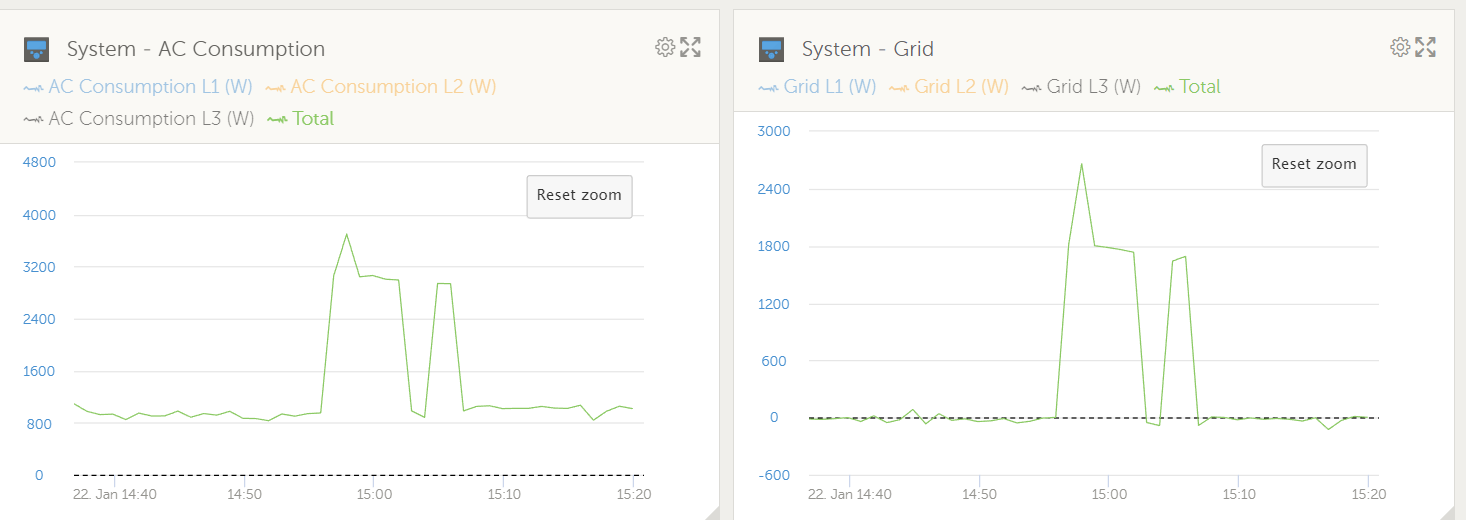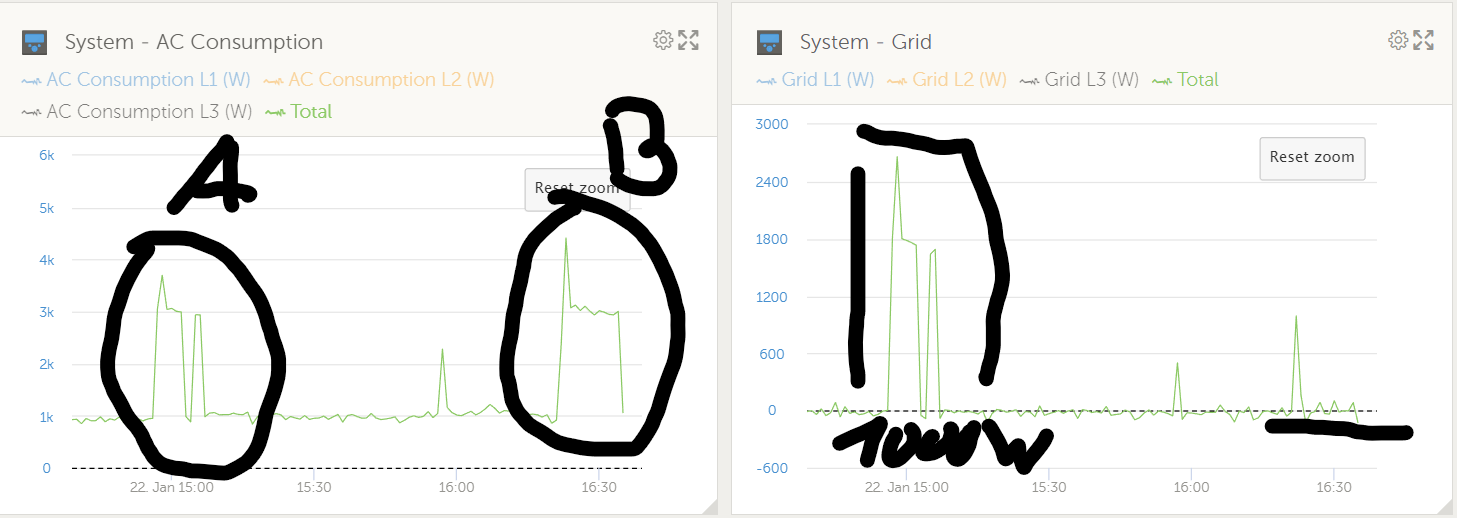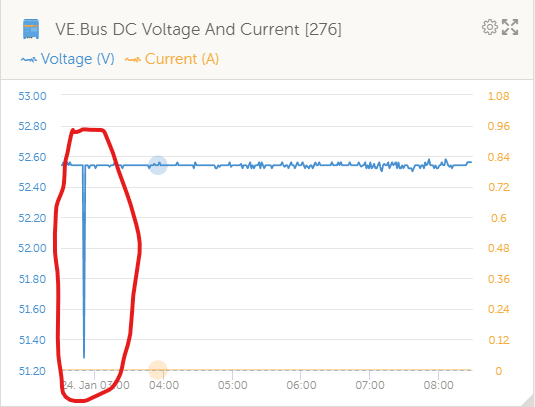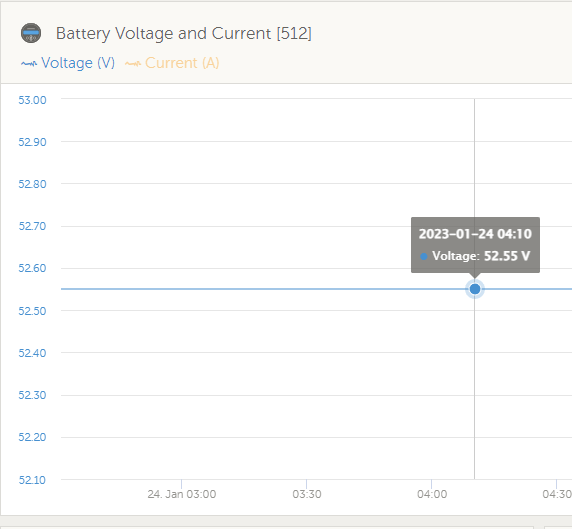Dear all,
I have the following system:
3phase ESS with MP2 5000 Firmware 494
1 MPPT RS450/100 Firmware 1.09
REC BMS with 16s4p LFP
Fronius Symo 6 on ACout
Cerbo 2.92
DVCC active with STS and SVS
The system is running flawless since may this year.
Today I got a Ve.Bus Alarm Low Battery Warning and was wondering why. Voltage was 53V (according to BMS), cell voltages fine, SoC was 70% (min SoC in ESS is 65%).
Alarm Timestamp is 14:58, and now see the difference between BMS, MPPT and VE.Bus concerning voltage readings:
BMS (53,02V):

MPPT (52,39V)
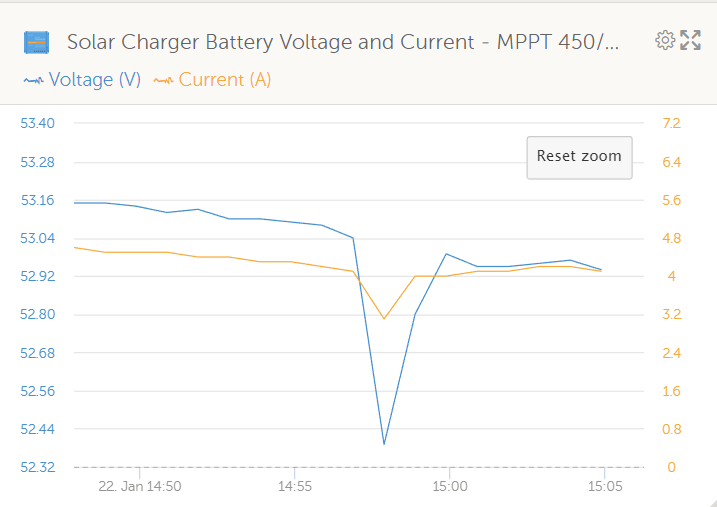
VE.Bus (50,39V)

The Warning was cleared after 30seconds, all three devices are showing again the same voltage reading like it was before.
Does any one have an idea about the root cause?
Thanks i advance
Br
Mike

